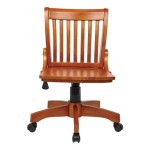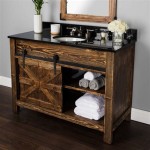How To Make Your Own Farmhouse Table
Building your own farmhouse table is a rewarding project that can add rustic charm to your home. To achieve a successful outcome, several essential aspects must be considered. These include choosing the right materials, understanding joinery techniques, assembling the table correctly, and finishing it to your desired style.
This article will guide you through each of these key elements, providing detailed instructions and helpful tips. By understanding the fundamentals and following the steps outlined below, you can create a beautiful and functional farmhouse table that will be a treasured addition to your home for years to come.
Materials Selection
The choice of materials will significantly impact the durability, aesthetics, and cost of your farmhouse table. Consider the following options:
- Wood: Pine, oak, maple, and walnut are popular choices for farmhouse tables, offering a range of colors, textures, and grain patterns.
- Legs: Table legs can be made from wood, metal, or a combination of both. Wood legs provide a classic look, while metal legs offer a more modern and industrial aesthetic.
- Hardware: Screws, bolts, and nails are essential for securing the various components of your table. Choose hardware that is compatible with the materials you select.
Joinery Techniques
Joinery refers to the methods used to connect the different parts of your table. Common joinery techniques for farmhouse tables include:
- Mortise and tenon: A strong and durable joint where a tenon (a protruding piece of wood on one piece) is inserted into a mortise (a corresponding hole on the other piece).
- Dowels: Cylindrical wooden pins that are inserted into holes drilled in the connecting pieces to reinforce the joint.
- Pocket holes: Holes drilled at an angle into one piece, allowing screws to be inserted perpendicularly to join two pieces together.
Assembly
Once you have selected your materials and joinery techniques, it's time to assemble the table:
- Attach the legs: Join the legs to the tabletop using the chosen joinery method. Ensure they are securely attached and perpendicular to the tabletop.
- Connect the aprons: Aprons are horizontal beams that connect the legs at the top and bottom. Secure them using screws or bolts.
- Reinforce the joints: Use glue and clamps to reinforce the joints and prevent movement over time.
Finishing
The final step is to finish the table to your desired style and protect it from wear and tear:
- Sanding: Smooth the surface of the table using sandpaper, starting with coarse grit and gradually moving to finer grits.
- Staining: Apply a stain to enhance the wood's natural color or add a different hue.
- Sealing: Protect the table from moisture and wear with a clear sealant, such as polyurethane or varnish.
By following these essential aspects, you can create a stunning and durable farmhouse table that will be a cherished part of your home for many years to come.

Farmhouse Table Updated Pocket Hole Plans Ana White

Diy Farmhouse Table Love Grows Wild

Diy Farmhouse Table And Bench Honeybear Lane

Diy Farmhouse Table Free Plans Rogue Engineer

Diy Farmhouse Dining Table Free Plans And Tutorial
:max_bytes(150000):strip_icc()/decor-and-the-dog-farmhouse-table-56af6cc05f9b58b7d018acf1.jpg?strip=all)
14 Free Diy Woodworking Plans For A Farmhouse Table

Diy Farmhouse Table Love Grows Wild

Diy Classic Farmhouse Kitchen Table Catz In The

Diy Farmhouse Table With Extension Leaves Plans Sweet Tooth Life

Diy Small Farmhouse Table Plans And Tutorial








